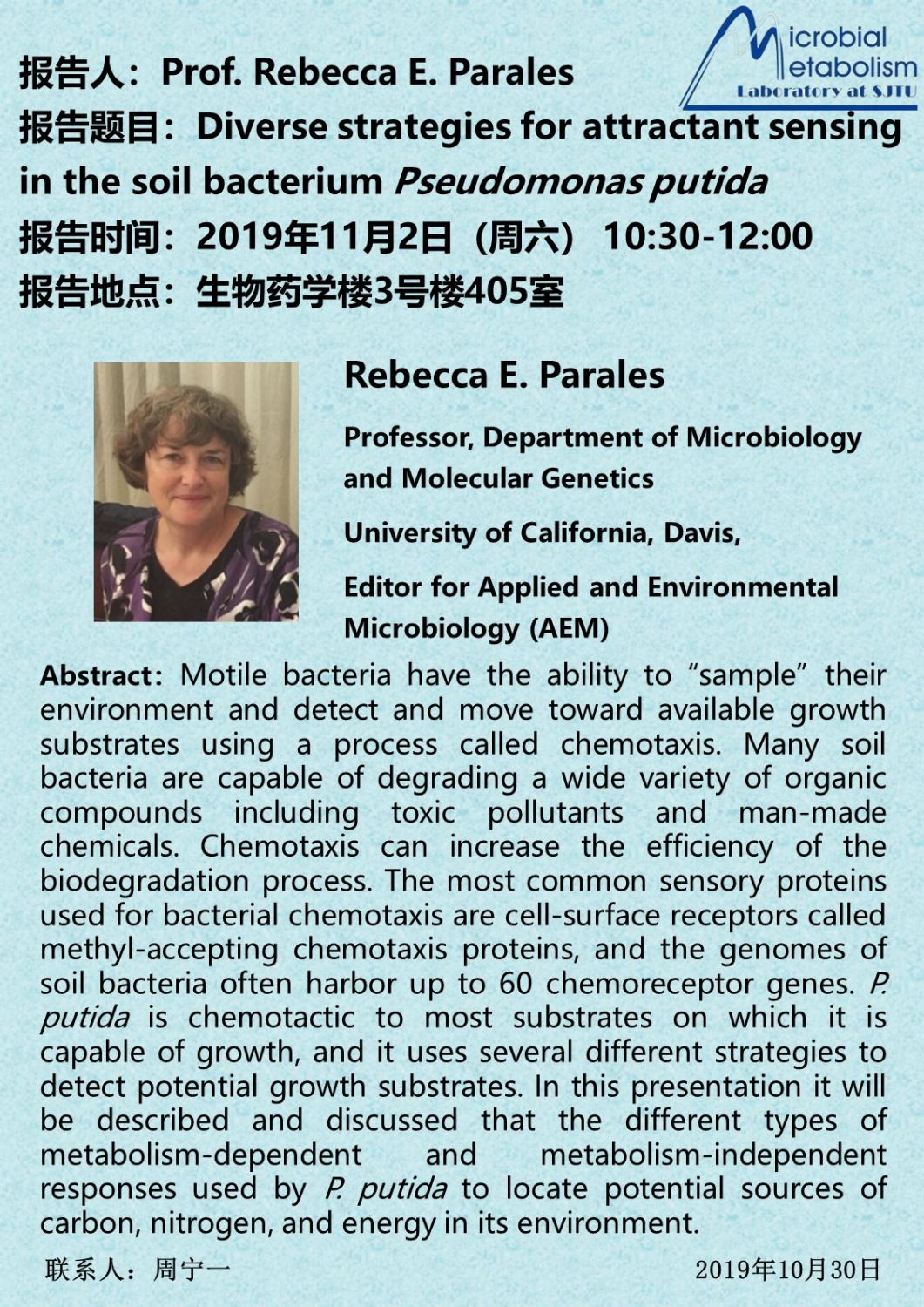搜索


報告人:Rebecca E. Parales
報告時間:2019年11月2日(周六) 10:30-12:00
報告地點:生物藥學樓3號樓405室
聯系人👨💼:周寧一

報告人簡介:
Professor, Department of Microbiology and Molecular Genetics, University of California, Davis,
Editor for Applied and Environmental Microbiology(AEM)
報告摘要:
Motile bacteria have the ability to“sample”their environment and detect and move toward available growth substrates using a process called chemotaxis. Many soil bacteria are capable of degrading a wide variety of organic compounds including toxic pollutants and man-made chemicals. Chemotaxis can increase the efficiency of the biodegradation process. The most common sensory proteins used for bacterial chemotaxis are cell-surface receptors called methyl-accepting chemotaxis proteins, and the genomes of soil bacteria often harbor up to 60 chemoreceptor genes. P. putida is chemotactic to most substrates on which it is capable of growth, and it uses several different strategies to detect potential growth substrates. In this presentation it will be described and discussed that the different types of metabolism-dependent and metabolism-independent responses used by P. putida to locate potential sources of carbon, nitrogen, and energy in its environment.



 首頁
首頁

 EON4概況
EON4概況

 師資隊伍
師資隊伍

 人才培養
人才培養

 招生就業
招生就業

 科學研究
科學研究

 平臺基地
平臺基地

 黨群工作
黨群工作

 校友之家
校友之家

 安全工作
安全工作

 網上辦事
網上辦事

 當前位置:
當前位置: